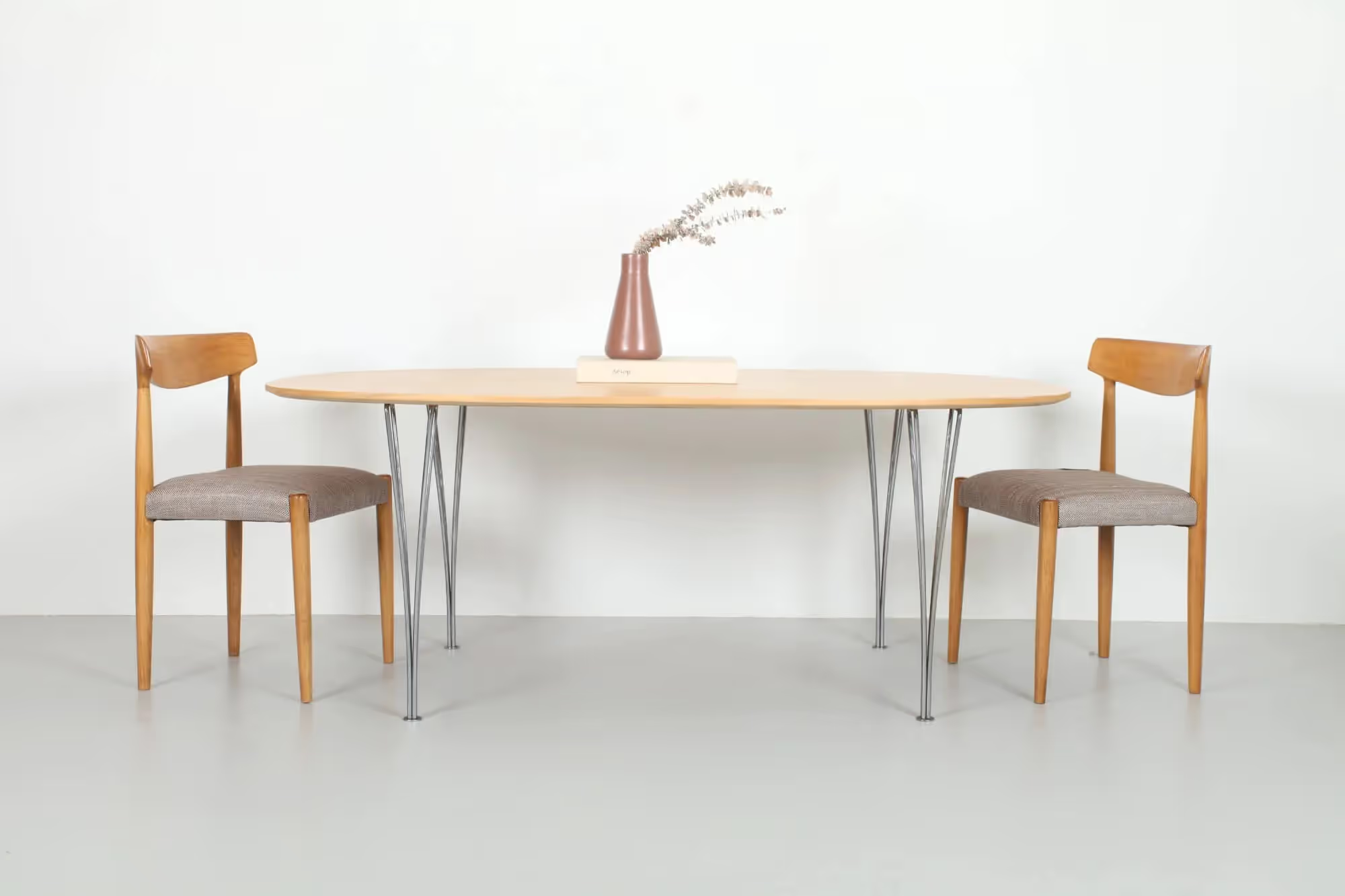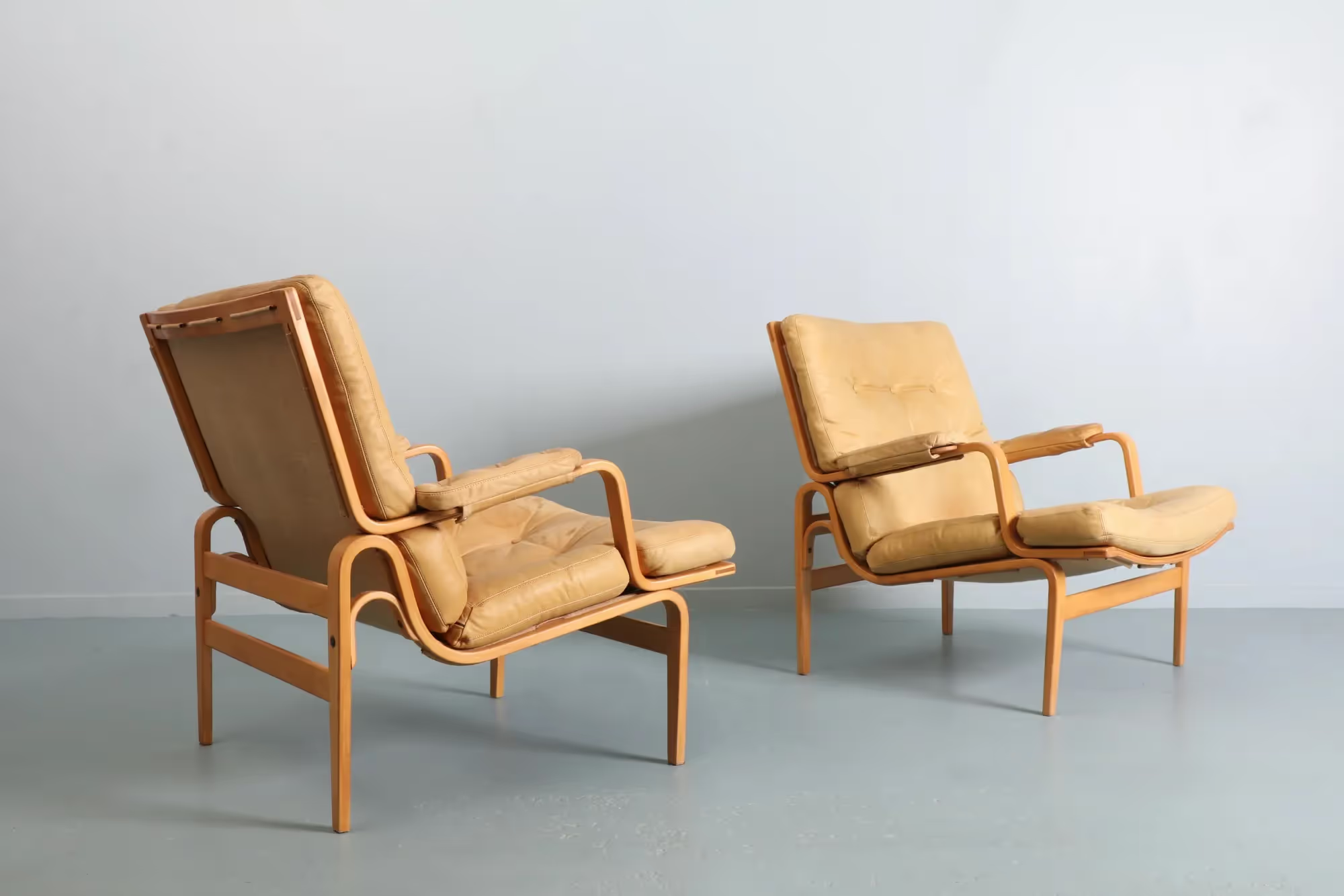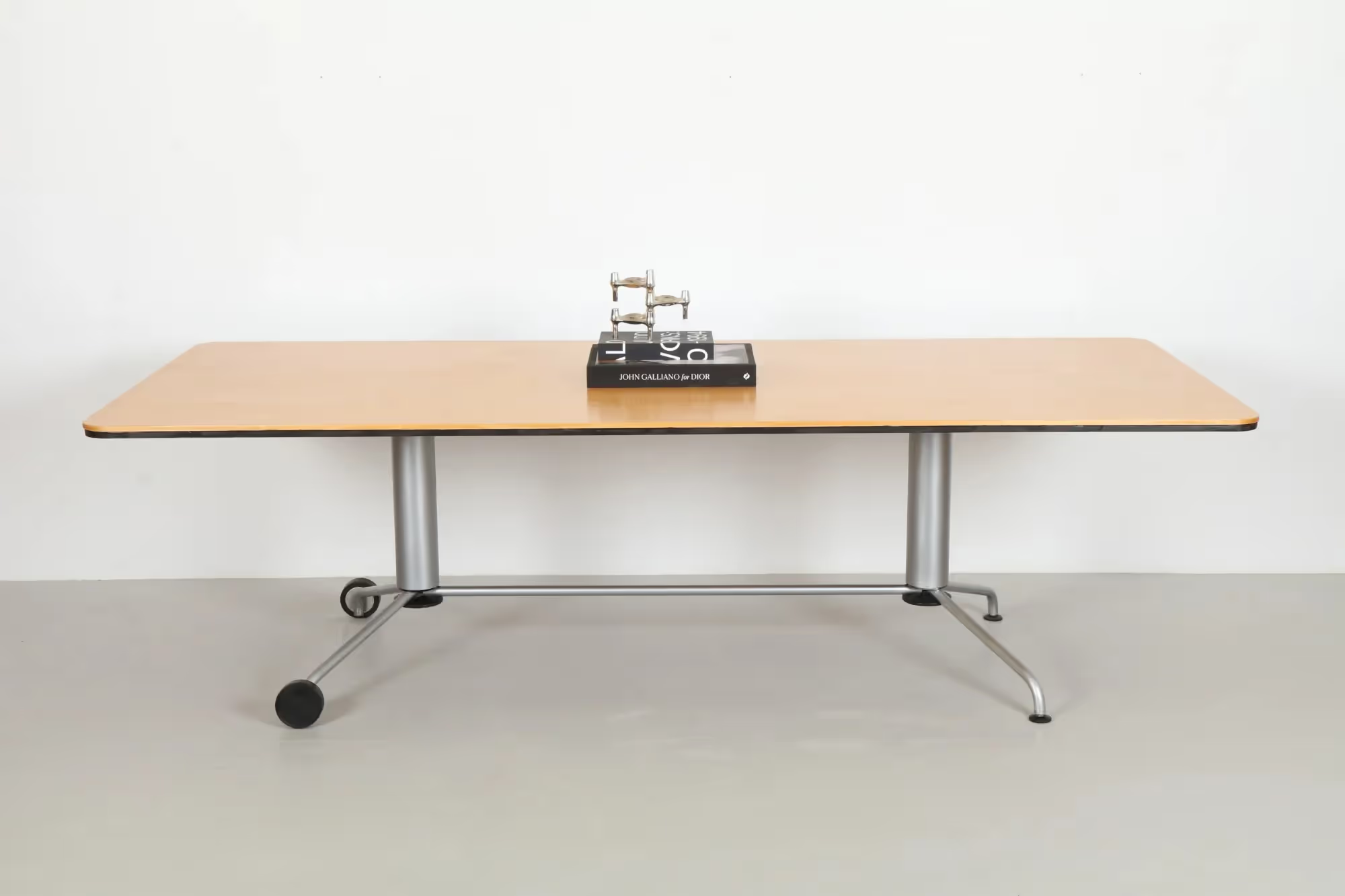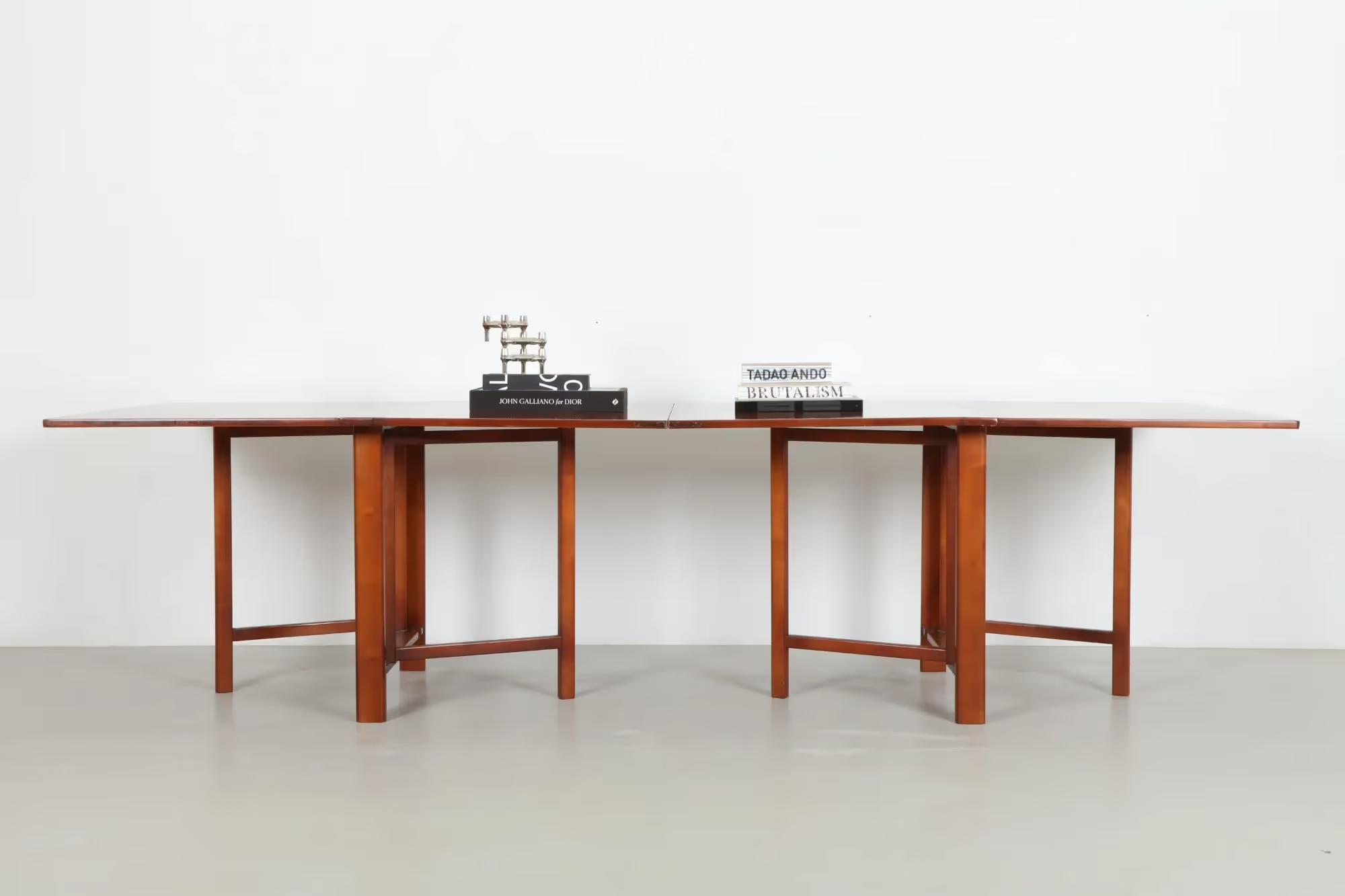Iconic Bruno Mathsson 'Superellipse - B613' Dining Table by Fritz Hansen
Internationally recognised Swedish designer and architect, Bruno Mathsson was an advocate of simplicity, beauty and elegance in form, which also applied to the furniture he designed. His B613 'Span-Leg' Dining Table for Fritz Hansen is no exception.
Reducing the very essence of a dining table down to its purest form, the 'Span-Leg' table has a graphic simplicity that is emphasised through its quality construction. This design features the iconic Super-Elliptical table top that Bruno Mathsson designed with Piet Hein in 1968. It's a versatile design fit for any contemporary dining room.
Chrome steel legs support a beech veneer tabletop crafted to a very high standard.
Each piece is checked and carefully hand restored at our Kingsland studio workshop. Our focus is preserving the character and patina of the design while ensuring it displays beautifully in a contemporary interior...
Each piece is checked and carefully restored at our Kingsland studio workshop. Our focus is preserving the character and patina of the design while ensuring it displays beautifully in a contemporary interior.
- Joints checked and reglued
- Timber cleaned and stains removed
- Veneer repairs if needed
- Surfaces polished / refinished
Our full collection is showcased at our Eden Terrace gallery. We have parking available beside the building and would love to see you.
All pieces are available for collection in person from our Eden Terrace gallery. We are also happy to provide a quote for delivery throughout New Zealand.
Please enquire for delivery options.
Iconic Bruno Mathsson 'Superellipse - B613' Dining Table by Fritz Hansen
GOOD FORM, 86 Newton Rd, Eden Terrace, Auckland.
Bruno Mathsson (1907–1988) was one of Sweden’s most innovative and influential modernist designers, renowned for his pioneering approach to comfort, form, and craftsmanship. Born in Värnamo into a family of cabinetmakers, Mathsson carried forward a deep respect for wood while reimagining how it could serve the needs of modern living. Self-taught yet deeply skilled, he experimented tirelessly with bent beech and laminated techniques, seeking to make furniture that was both functional and sensuous.
In the 1930s, his breakthrough came with the Grasshopper chair, a light, sculptural design that embraced the body’s contours—a radical departure from the rigid furniture of the time. Mathsson believed that good design must support the natural posture of the human body, a philosophy he called “the science of sitting.” His later works, such as the Eva, Pernilla, and Jetson chairs, embodied this harmony of ergonomics and elegance, becoming icons of Scandinavian modernism.
Beyond furniture, Mathsson was fascinated by how architecture could enhance everyday life. He designed transparent, light-filled homes that blurred the line between indoors and outdoors, anticipating today’s minimalist ideals. His work was celebrated internationally, from MoMA in New York to design fairs across Europe, where he stood as a symbol of Swedish functional beauty.
Bruno Mathsson’s legacy endures in his belief that true modern design is not about excess or ornament, but about the quiet intelligence of form serving life itself.

.svg)
.svg)












